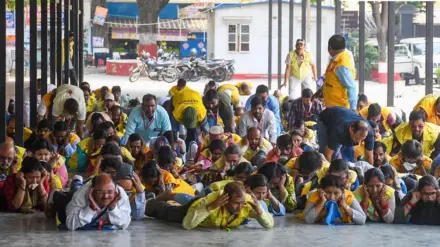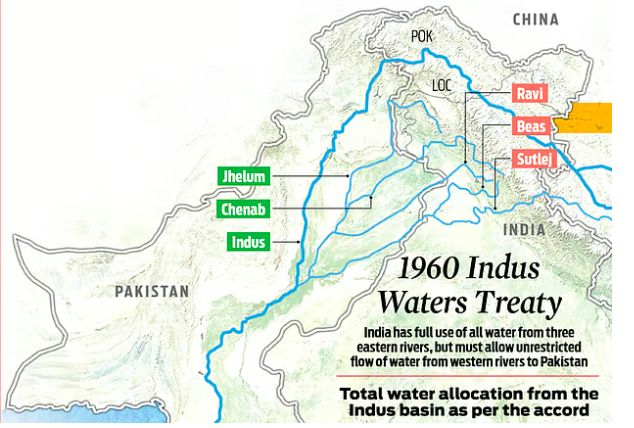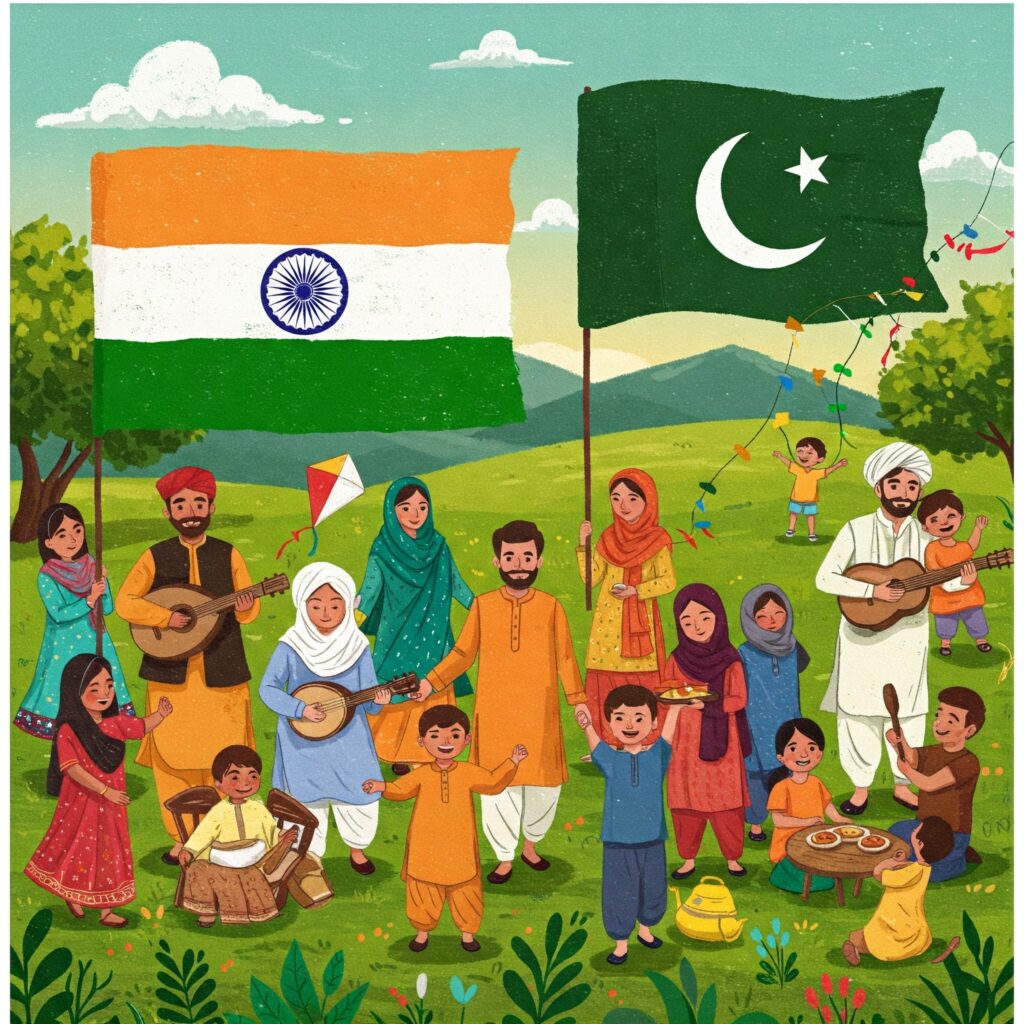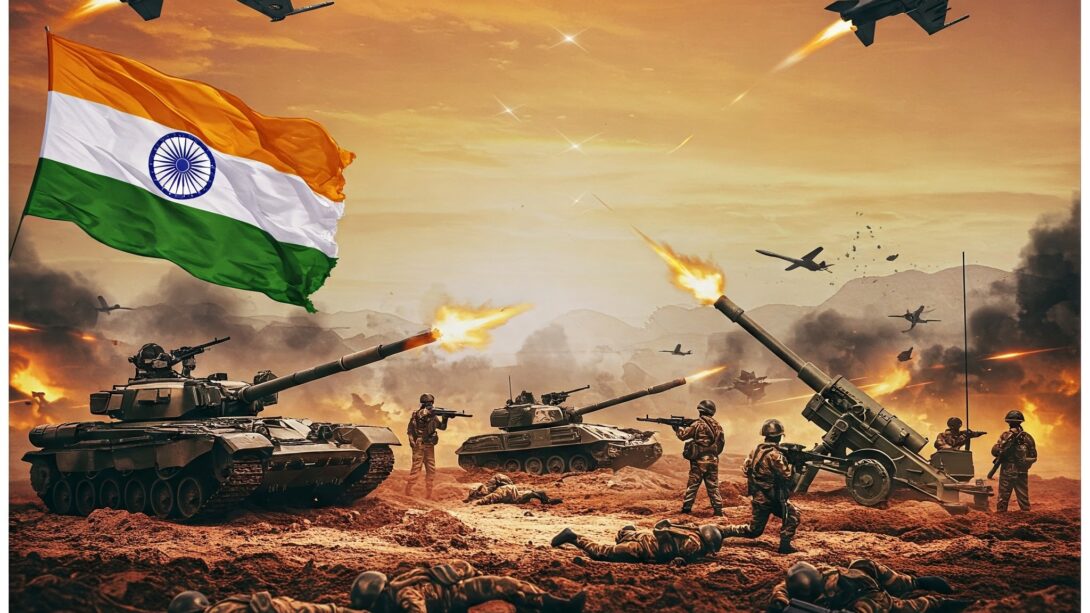For the first time in over half a century, India stands at the precipice of a storm—a full-scale war, its shadow looming like a vengeful monsoon cloud over the horizon. The civil defence drills, like a clarion call echoing through the valleys, seek to awaken the slumbering consciousness of a nation, not as a fleeting spectacle on the screens of media, but as a somber rehearsal for the chaos that may soon unfurl in the tapestry of their lives. These drills, a crucible of preparation, aim to forge unity among the common folk, the guardians of vital civil assets, and the trained sentinels, testing their dance in the fiery rhythm of a war-like tempest. Yet, defence preparedness stands apart, a towering fortress of strategy, its walls unyielding under the gaze of a vigilant sun.
Under the stewardship of Prime Minister Narendra Modi, the government has never shied away from rallying the nation in grand, war-like mobilisations, each a brushstroke on the canvas of unity. From the thunderous upheaval of demonetisation, a lightning strike that shook the roots of the economy, to the cleansing winds of Swachh Bharat, sweeping away the dust of neglect, and the symbolic darkness of the COVID-19 lights-off moment—a test of the electric grid’s resilience, like a heartbeat flickering in the night—these initiatives have whispered to the people: “Rise, for you are in a mission-mode, a warrior in a battle for progress.” Now, the drills return to test the grid once more, plunging cities into deliberate blackouts, a shadowed mirror reflecting the fragility of light in the face of war’s abyss.

Wars and their simulations, like ancient drums of battle, beat a rhythm that stirs the soul, knitting the threads of society into a tighter weave of cohesion, their shared gaze fixed on lofty, collective dreams. They temper the spirit, preparing hearts for the bitter winds of hardship, ensuring that morale, a fragile flame, does not flicker out in the gales of adversity. Yet, on the other side of this coin lies destruction—a ravenous beast that devours all in its path. In the eyes of many, perhaps even the government, the Pahalgam attack of April 22, 2025, was India’s own 9/11—not in its scale, but in the inferno of response it ignited. Pakistan, in this narrative, emerges as the Afghanistan of 2001—a fractured land, held together only by the brittle chains of religious zealots, wielding terror as their sole instrument of statecraft, a dagger dipped in the poison of chaos.
When George W. Bush stood amidst the rubble of the World Trade Center, his voice a beacon of resolve—“I hear you”—the United States unleashed a blitzkrieg, a storm of fury that sought to bomb Afghanistan back to the Stone Age, secure in the knowledge that no retaliation would dare follow. But Prime Minister Modi’s vow, a fiery oath to pursue terrorists to the ends of the earth, dances on a razor’s edge—a promise that could summon a furious counterstorm if that pursuit blossoms into the crimson flower of full-fledged war. In a bold stroke, India unsheathed a weapon sharper than steel—the abeyance of the Indus Waters Treaty, a lifeline that once flowed like a sacred river of peace between the two nations since 1960. On April 23, 2025, India declared the treaty suspended, a thunderclap that reverberated across the subcontinent, threatening to parch Pakistan’s fields and cities. The western rivers—Indus, Jhelum, and Chenab—once a shared vein of sustenance, now became a noose, tightening around Pakistan’s agrarian heart, as India ceased sharing the lifeblood of hydrological data, leaving Pakistan blind to floods or droughts, a nation adrift in uncertainty.

But India’s wrath did not end there. Like a chessmaster moving pieces with precision, the government struck further blows to shake Pakistan on the global stage. The Attari-Wagah border, a gateway of trade and travel, was sealed shut with the finality of a slamming iron gate, its closure on April 23 echoing the end of a fragile truce. Pakistani diplomats, declared persona non grata, were cast out from New Delhi’s soil, their military, naval, and air advisors given a mere week to flee, while Indian counterparts were recalled from Islamabad in a mirror of retribution. Visas under the SAARC Exemption Scheme were torn asunder, with Pakistanis given a fleeting 48 hours to depart, a decree as cold as the Himalayan winds. These measures, a crescendo of diplomatic fury, painted Pakistan as a pariah, its international standing trembling like a leaf in a storm.
India’s bold gambit found echoes of support from the far corners of the globe, a chorus of allies standing firm in the face of terror. Russia, a steadfast friend, nodded in approval, its voice a growl of solidarity, citing its own battles against extremism as a parallel to India’s struggle. The United States, a beacon of global power, lent its weight, condemning Pakistan’s terror links with the sharpness of a judge’s gavel, its leaders urging Islamabad to dismantle the nests of Lashkar-e-Taiba and Jaish-e-Mohammed. Saudi Arabia, a titan of the Islamic world, extended a hand of support, its condemnation of the Pahalgam attack a signal that even religious kinship could not shield Pakistan’s missteps. Israel, a master of resilience, stood shoulder to shoulder with India, its intelligence networks buzzing with shared strategies to counter terror, a partnership forged in the fires of survival. Together, these nations formed a constellation of support, their voices a shield against Pakistan’s cries of injustice, amplifying India’s resolve on the world stage.

Yet, while civil defence drills test the nation’s readiness, a true war remains a perilous ascent up a mountain of risk, one that could shatter India’s narrative as an economic titan, poised to claim its throne in a multipolar world as a beacon of responsible leadership. The government must tread carefully, keeping the gates of diplomacy ajar, a bridge of whispers that might coax Pakistan to retreat from the brink by surrendering the architects of terror—the shadowy leaders of Lashkar-e-Taiba, Jaish-e-Mohammed, and their fringe kin. India’s restrained response to the 26/11 Mumbai attacks, a silent thunder of patience, once cast a long shadow of shame over Pakistan, as its own media turned a piercing gaze upon Ajmal Kasab’s village and kin, laying bare the nation’s complicity in a floodlight of truth. Perhaps these drills, a theater of preparation, coupled with the strategic abeyance of the treaty and global pressure, can serve as a psychological tempest, a signal as sharp as a hawk’s cry, warning Pakistan of the folly of wielding terror as a pawn in the chessboard of geopolitics—a game where the cost of a wrong move could be a checkmate of ruin for both nations

Where is the outrage over Pakistan harboring terrorists? When Israel defends itself, it’s called ‘genocide,’ and when India does, it’s called ‘counterterrorism.’ The hypocrisy is glaring. We’re all having an eye-opener. Well done, India. Questions lead to answers, and India answered accordingly.
Fairness and transparency in global politics it just a myth.But you pin pointed the most importance observation.Thanks for sharing your view.